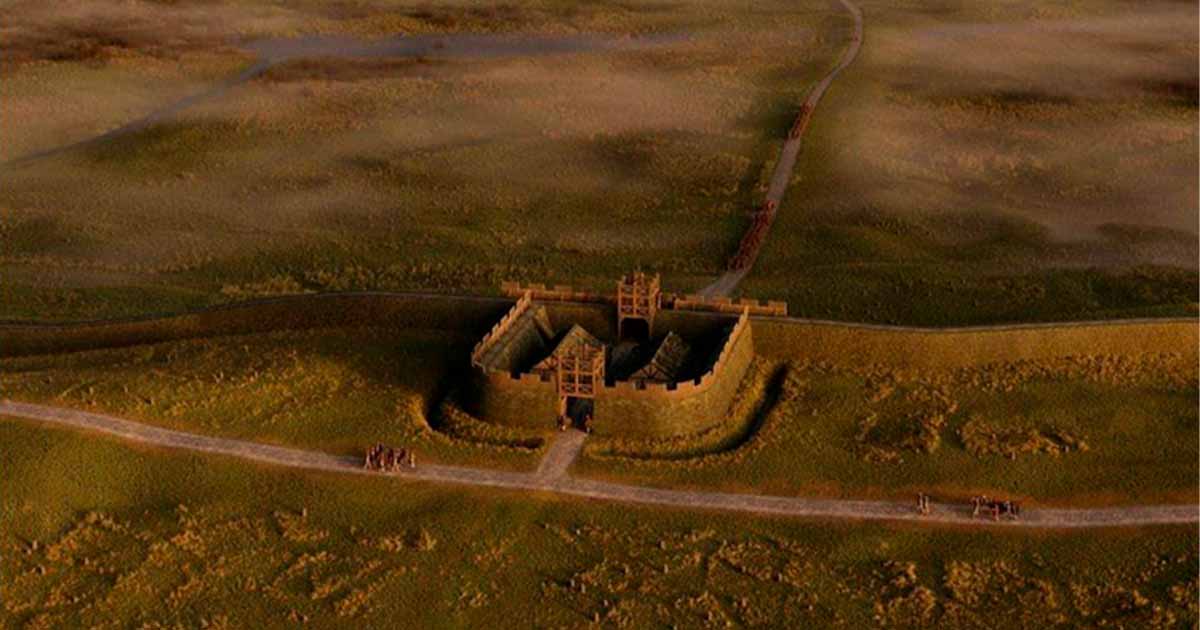Lost Roman Fortlet Rediscovered Near Scotland’s Clydebank
Behold! A wondrous discovery has been made in West Dunbartonshire in Scotland. Amidst the rugged Scottish terrain, a lost Roman ‘fortlet’ has been identified on the mighty Antonine Wall, that stood as a sentinel of power and might in the battles against rebellious Scottish tribes.
Commanded by Emperor Claudius, the Roman army arrived in Scotland in 43 AD. Facing fierce resistance from native tribes, including the Caledonians, the Romans built the Antonine Wall in 142 AD to mark the north-western boundary of their empire. And to defend their wall, the Romans built a series of forts, and fortlets.
Now, with high-tech help from ‘gradiometry’, Historic Environment Scotland (HES) has announced the discovery of a lost Roman fortlet, after a series of attempts failed to find it in the 1970s and 1980s.
When Earth’s Magnetic Field Becomes A Tool
HES announced the discovery on World Heritage Day, which is an international celebration of ancient cultural heritage. Located in a field close to Carleith Primary School in Duntocher, Clydebank, the fortlet was situated beside the Antonine Wall, which represents one of Scotland's six UNESCO World Heritage Sites.

Archaeologist scans the field where the Roman fortlet has been located. (HES)
The Roman fortlet was first referenced in 1707 by antiquarian Robert Sibbald, who claimed to have seen the fortlet near Carleith Farm. For several decades archaeologists looked for the lost site, but now using gradiometry surveying, an archaeologist has successfully identified the lost fortlet. Gradiometry, is a geophysical surveying technique that measures variations in the Earth's magnetic field, allowing for the identification of subsurface structures.
- Venta Icenorum: Excavating Romans in Boudicca’s Lands
- Didius Julianus, the Man Who Bought the Roman Empire
Serving Time at the Remote Roman Fortlet
The gradiometric scans helped the archaeologist identify the stone base of the fortlet, upon which, a turf base was laid for ramparts that measured about 2 meters (6.56 ft) high. The newly discovered fortlet comprised two small wooden buildings in which it is thought around 10 to 12 Roman soldiers would have stayed for a week at a time. The soldiers would have been stationed at the much larger Duntocher fort in West Dunbartonshire, which is also known as the Antonine Wall Fortlet 16.
Riona McMorrow, deputy head of world heritage at HES, said “it’s great to see how our knowledge of history is growing as new methods give us fresh insights into the past.”

The small fortlet shown in a digitally generated image here, was located along the Antonine Wall. (HES)
Scotland’s Growing List of Occupation Archaeology
Roman fortlets in Scotland were essentially defensive military installations, constructed by the Roman Empire during their occupation from the 1st to the 4th century AD. These fortlets were strategically located along the northern frontier of the empire, known as the Antonine Wall, and they served to monitor and control the movements of the often rebellious local population.
Typically rectangular in shape, Roman fortlets in Scotland measured around 40 meters (131 ft) in length and 30 meters (98.42 ft) in width. Other examples of Roman fortlets in Scotland include Bar Hill, Castlecary, and Rough Castle, all of which played a significant role in the Roman occupation of Scotland and are now protected historical sites.
- Barbarians versus Romans: Violence and Urban Life in Late Antiquity
- Remote Sensing Technology Uncovers 66 “Hidden” Roman Bases In Spain
Building Knowledge, And Protecting the Antonine Wall
In Scotland, excavations at Roman sites have revealed important insights into the functions of the Roman army during their occupation, including insights into how they built their defensive military structures, civilian settlements, and trade networks. New techniques in archaeological analysis, such as Gradiometry, ground-penetrating radar and 3D modelling, have allowed researchers to uncover a host of new and important information about the Roman presence in Scotland, shedding light on this turbulent period of Scottish history.
This new discovery adds to the list of around 40 fortlets that are known to have lined the Roman’s Antonine Wall. But this building is special, because only nine of these 40 defensive structures have so far been identified. Furthermore, it is hoped that the new geophysical survey of this tenth fortlet will not only help archaeologists better understand how the wall functioned, but also how to protect it.
Top image: The small fortlet shown in a digitally generated image here, was located along the Antonine Wall in Scotland. Source: Historic Environment Scotland
By Ashley Cowie



















